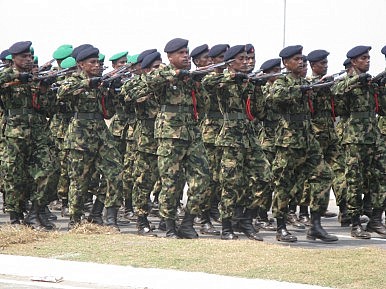
Image Credit: Chamal Pathirana via Wikimedia Commons
During a recent visit to Sri Lanka, I (unsurprisingly) saw a lot of military personnel. Many times they were riding around in vehicles. On other occasions the interaction was a bit more personal. In Jaffna, as I was purchasing a new SIM card, a pair of Sri Lanka Army members entered the shop. In Trincomalee, I walked into town to grab the Sunday newspapers. There’s a place I remembered from a previous visit; it’s right by the bus stand. When I got there, two members of the Sri Lanka Army were inside picking up papers. (Should I at least be encouraged that they’re reading something?) After I bought three papers and was walking back to my hotel, I saw a pair of Navy men drive by.
If you’re visiting Sri Lanka and you leave your hotel room in Colombo, the capital, chances are you’re going to see at least a few military personnel during the course of the day. Without question, the situation is far more noticeable in the Northern and Eastern Provinces. Sri Lanka’s civil war ended in May 2009, but a military drawdown still hasn’t happened. Since Mahinda Rajapaksa was thrown out of power in January 2015, the military may be intervening less in civilian affairs, but much more needs to be done. The military’s intervention into civilian life has undoubtedly continued under the new government, which has shown no indication of wanting to decrease troop levels. And there’s no question that the Sinhalese military’s strong presence in Tamil-dominated areas results in a range of serious problems.
“The immediate impact [of militarization in the Northern and Eastern Provinces] in terms of loss of livelihood, torture, sexual violence is well known and documented,” says Kumaravadivel Guruparan, a spokesperson for the Tamil Civil Society Forum. “I am also worried about the long term collective psycho social impact on the Tamil population as a whole. The objective of militarisation I have long maintained is the normalisation of abnormalcy and this will have wide ranging impact on self motivation and self development in individuals and also the collective desire within the community for valuable public ideals,” such as justice, equality and self-determination.
Moreover, pervasive militarization throughout the island nation’s historically Tamil areas undermines any legitimate transitional justice agenda and the most basic precepts of a fully functioning democracy. In line with commitments made at the UN Human Rights Council (HRC), there’s still time for Sirisena to prove that he’s actually concerned about reaching out to the nation’s war-weary Tamil community. If the president wanted to move in such a direction, he could do a few things quickly.
 Sirisena could first acknowledge that the widespread militarization in Sri Lanka’s north and east is extremely problematic. He could promise that a significant military drawdown will occur during his first term in office. He could consistently explain to the entire country that the implementation of a comprehensive transitional justice package is the best way to ensure that Sri Lanka’s peace is a lasting and genuine one. Relatedly, he could fully explicate the contents of the recently passed HRC resolution on Sri Lanka (and why it matters). Lastly, he could immediately release the majority of Tamil political prisoners. Unfortunately, there are virtually no signs that Sirisena is going to do any of those things.
Sirisena could first acknowledge that the widespread militarization in Sri Lanka’s north and east is extremely problematic. He could promise that a significant military drawdown will occur during his first term in office. He could consistently explain to the entire country that the implementation of a comprehensive transitional justice package is the best way to ensure that Sri Lanka’s peace is a lasting and genuine one. Relatedly, he could fully explicate the contents of the recently passed HRC resolution on Sri Lanka (and why it matters). Lastly, he could immediately release the majority of Tamil political prisoners. Unfortunately, there are virtually no signs that Sirisena is going to do any of those things.
—————
Courtesy Sri Lanka Campaign for Peace & Justice

